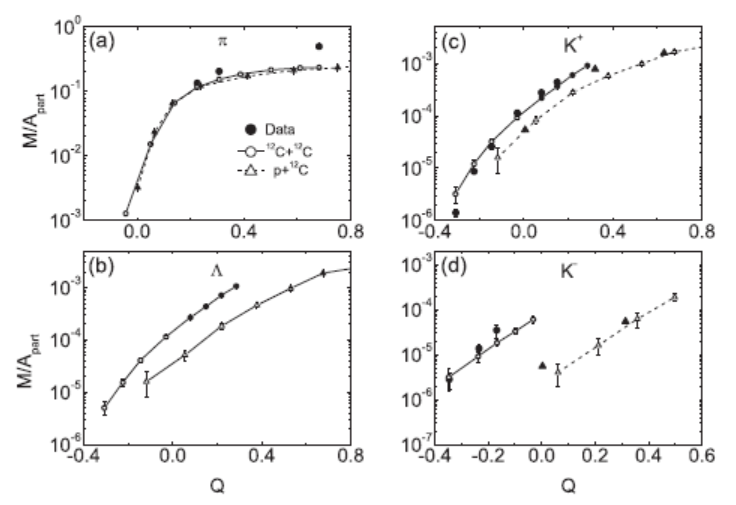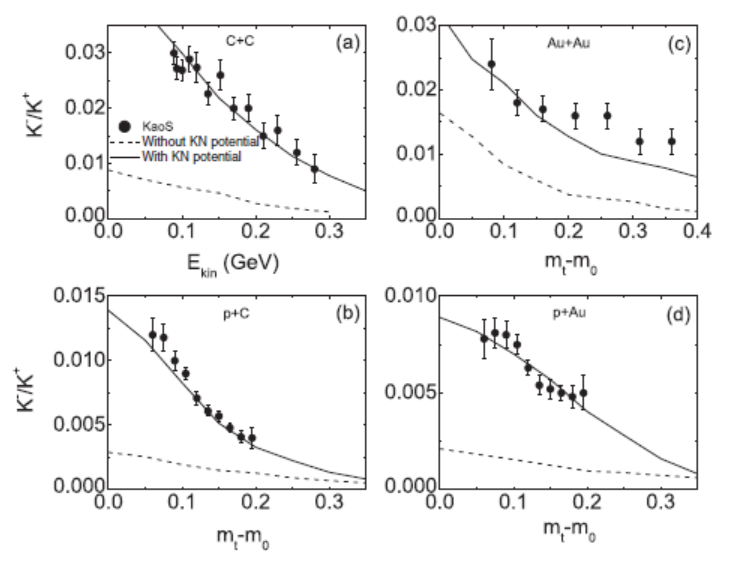Dynamics of producing strange particles in proton induced nuclear reactions near threshold energies have been investigated within the Lanzhou quantum molecular dynamics (LQMD) transport model which is developed by the Theoretical Physics Group at the Institute of Modern Physics, CAS (IMP).
The local density formed in proton-nucleus collisions is definite, around the saturation density. It would be an effective approach to explore the in-medium properties of hadrons in the proton induced reactions. Strange particles may exist in compact stars, i.e. neutron stars. The equation of state in dense matter may be modified with the inclusion of strange particles. The in-medium properties of strangeness can be extracted from the nuclear reactions in terrestrial laboratories associated with transport models.
All of reaction channels for producing strange particles have been included in the LQMD model. The in-medium modifications to particle production are considered to be through corrections to the elementary cross sections via the effective mass and the mean-field potentials. The strangeness production is strongly suppressed in proton induced reactions in comparison to heavy-ion collisions. The kaon-nucleon and antikaon-nucleon potentials change the structures of rapidity and transverse momentum distributions, and also the inclusive spectra. The measured K-/K+ ratios in collisions of 12C+12C, 197Au+197Au, p+12C, and p+197Au from KaoS collaboration have been well explained with inclusion of a weakly repulsive KN potential of the order of 28 MeV and of the attractive anti-KN potential being -100 MeV in nuclear medium.
The results have been published in Physical Review C 90, 064604 (2014). This research was supported by the Major State Basic Research Development Program in China (Nos 2014CB845405 and 2015CB856903), the National Natural Science Foundation of China Projects (Nos 11175218 and U1332207) and the Youth Innovation Promotion Association of Chinese Academy of Sciences.
URL: http://link.aps.org/doi/10.1103/PhysRevC.90.064604
DOI: 10.1103/PhysRevC.90.064604

Fig. 1 Multiplicities of Π, Δ, K+ and K- per participating nucleon in the reactions of 12C+12C and p+12C as a function of the available energy, i.e., the Q value is the difference of invariant energy to the threshold value

Fig. 2 Ratio of K-/K+ as a function of transverse mass (kinetic energy) in collisions of 12C+12C and protons on 12C and 197Au at beam energies of 1.8A GeV and 2.5 GeV, respectively. The incident energy of 1.5A GeV for the reaction of 197Au+197Au.

